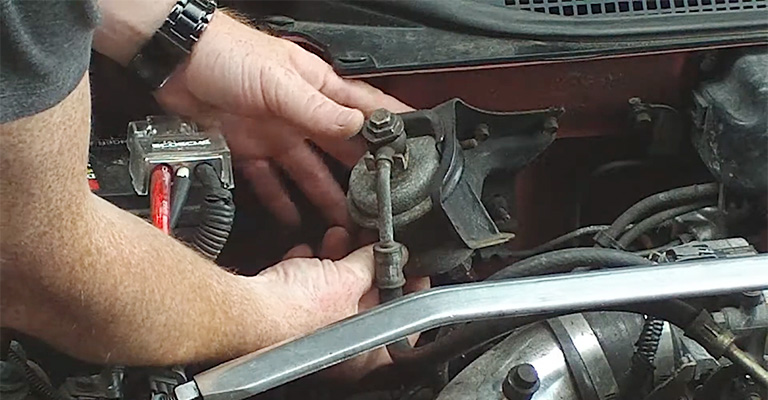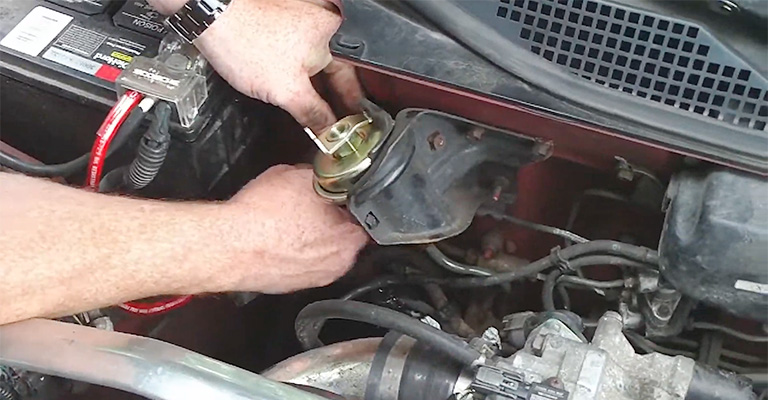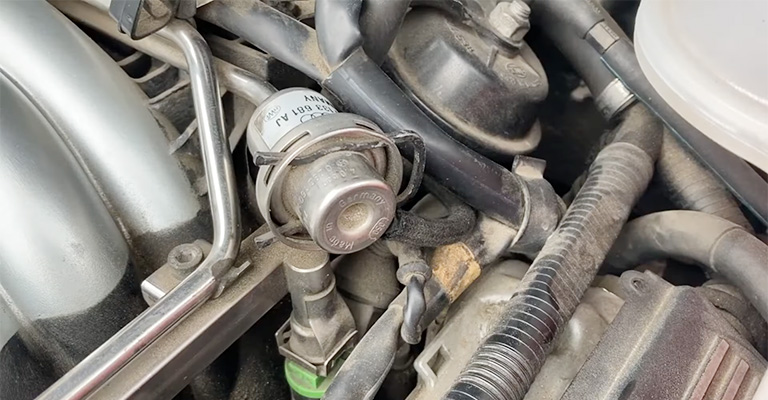Imagine you are driving along- eyes on the road, hands on the steering, and legs on the throttle and brake. Then, suddenly the dreaded check engine light pops up on the dashboard.
This can be a nerve-wracking experience, especially if you’re unsure what the code means or how to fix it. If you drive a 1990 Honda Accord and see code 43, you’re not alone.
This common issue can cause many symptoms, from poor fuel efficiency to difficulty starting the car.
But fear not – in this article, we’ll explore what code 43 means on a 1990 Honda Accord, also about the reasons that cause it, and how you can diagnose and fix it.
So, buckle up, and let’s dive in!

What Is Code 43?
The straight answer to this question is- that code 43 is a diagnostic trouble code, which is only specific to Honda vehicles.
Moreover, the check engine light is designed to alert the driver to the presence of a problem that may affect safety and performance.
When the engine control module detects a problem with these components, it stores a code in its memory and triggers the check engine light. One of those codes is 43.
Regarding the check engine light, code 43 indicates a problem with the fuel injection system or oxygen sensor. And that problem is causing the engine to run poorly or produce excessive emissions.
This code can hamper the vehicle in multiple ways, like reduced fuel efficiency, difficulty starting the engine, poor engine performance, damage to the catalytic converter, increased emissions, etc.
What Causes Code 43 on a 1990 Honda Accord?

As mentioned, code 43 refers to problems related to fuel injection systems or oxygen sensors. So, anything related to these segments may be a possible reason behind the appearance of the DTC code.
The most common causes of code 43 on a 1990 Honda Accord are discussed below.
Faulty Fuel Injectors

A faulty fuel injector is one of the most common causes of code 43. A damaged or malfunctioning fuel injector can cause the engine to run too rich or lean, triggering the code.
If the fuel injector is stuck open, it can cause too much fuel to be injected into the engine, which leads to a rich air or fuel mixture. This can cause the engine to run poorly, produce excessive emissions, and trigger code 43.
On the other hand, if the fuel injector is stuck closed or not injecting enough fuel, it can cause the engine to run too lean. This causes poor performance and the possibility of triggering code 43.
Additionally, a faulty fuel injector can cause damage to the engine over time, which can result in more serious issues down the line.
Damaged Wiring

Some wires connect the fuel injectors and oxygen sensors to the engine module. Let it be due to weariness or tear, corrosion, or damage from an accident. Any kind of damage to those wirings can cause code 43 to appear.
If the wiring to the fuel injector is damaged, it can cause the engine control module to receive an incorrect signal.
This can result in an incorrect fuel injection into the engine. Such an incident for sure will trigger code 43.
Similarly, if the wiring to the oxygen sensor is damaged, it can cause the engine control module to receive incorrect readings from the sensor. This will affect the air or fuel mixture and trigger code 43.
Failed Oxygen Sensor

The amount of oxygen in the exhaust gas must be proportionate. As the oxygen sensor is the one that monitors this event- it is a critical component in the exhaust system. If the oxygen sensor fails or is damaged, it can cause code 43 to be triggered.
When the oxygen sensor fails, it can cause the engine to run poorly and produce excessive emissions. The engine control module may detect this issue and trigger the check engine light, displaying code 43 on the dashboard.
Clogged Fuel Filter
A small amount of dirt is present in fuels sometimes, which can directly damage the engine. So, the fuel filters came to the rescue. This little part filters the fuel and takes out anything unwanted from the fuel.
If this fuel filter gets clogged somehow, it can restrict fuel flow to the engine, which may cause the engine to run poorly and trigger code 43.
Besides causing code 43, a clogged fuel filter can cause the engine to run poorly and produce excessive emissions. In some cases, the fuel pump itself also may get affected. Well, in such a situation, there might be a drop in fuel pressure.
Malfunctioning Fuel Pressure Regulator

In order to keep the engine performing consistently, it is important to maintain proper fuel pressure.
This is what a fuel pressure regulator is responsible for. The fuel pressure is most likely to be too high or too low if somehow this part fails. As a result, your vehicle will tell you about it by triggering code 43.
A stuck or clogged fuel pressure regulator in a closed position will cause low fuel pressure. On the contrary, if it is in an open position- the fuel flow will be too high. Both of these incidents will lead to code 43.
Symptoms of Code 43
Though you will see a light blipping on the dashboards, there are other ways to know that your vehicle is close to showing you the unwanted code 43. Have a look at the following discussion.
Poor Acceleration and Performance
A driver may experience poor acceleration and performance. This may include sluggish acceleration, difficulty maintaining speed, or a lack of power when driving up hills. Whatever it is, it is wise not to ignore the issue.
Rough Idle
The engine may idle roughly or inconsistently when code 43 is about to be triggered. It is likely to witness shaking or vibrations in the vehicle.
Increased Fuel Consumption
As the problem is directly related to the fuel injection system, you may notice unusual fuel consumption. This will cause the engine to run inefficiently and eventually to code 43.
Emission Issues
In a scenario when a Honda 1990 Accord is about to store code 43, there will be excessive emissions.
This is because the vehicle is having trouble with its emissions system. So, better look into it before the problem arises.
However, not all of the symptoms of code 43 are immediately noticeable. Some symptoms may be subtle or only appear under specific driving conditions. In some cases, the symptoms of code 43 may be intermittent, meaning they come and go.
Whatever the situation is, we suggest you not overlook any symptoms. This will save you precious time, money, and effort.
How to Diagnose and Fix Code 43?
Diagnosing code 43 requires a series of diagnostic tests and inspections. Here are the most common steps of a diagnosis of code 43.
Trouble Codes
The first step in diagnosing code 43 is to use an OBD-II scanner. It will retrieve the trouble codes from the vehicle’s onboard computer. Which will help identify the specific problem.
Fuel Injectors
Inspect the fuel injectors for signs of damage or wear. Especially check the resistance of each injector and ensure they are within the manufacturer’s specifications. If any injectors are faulty, they may need to be replaced.
Wiring
Issues with wiring are a major reason behind the appearance of code 43. As these connections are secure, the fuel regulation and the emission system are okay.
Have a look at the wiring to the fuel injectors for signs of damage or wear.
Check if the continuity in the wiring is okay or not. If any wiring is damaged, it must be repaired or replaced.
Oxygen Sensor
The Honda 1990 Accord has a way of telling you that the oxygen sensor is not alright. That is to store code 43.
So, this is a must to check for signs of damage or wear in the oxygen sensor. Double-check the sensor’s resistance and ensure it is within the manufacturer’s specifications.
If, by chance, the oxygen sensor is faulty, you will need to replace this part completely.
Fuel Filter
Anybody who knows code 43 will definitely inspect the fuel filter. Any signs of damage or wear can be a possible reason behind the situation.
Carefully check if the fuel flow through the filter is clogged. In this case, a total replacement is a solution.
Fuel Pressure Regulator
As discussed, the fuel pressure regulator is a prime reason behind code 43. So, it is important to scrutinize this part.
Look for signs of damage or wear and see if the fuel pressure maintains the required specifications.
Replacing the fuel pressure regulator will be a viable option if the fuel pressure regulator is faulty.
How to Fix Code 43?
It’s important to address code 43 promptly to prevent further damage to the vehicle and ensure optimal performance.
So, as soon as you are sure about what has been called upon the code- just go for the recommended solution given below.
Faulty Fuel Injectors
If one or more of the fuel injectors are faulty, they may need to be replaced.
Damaged Wiring to the Injectors
Repair or replace the wiring to the fuel injectors if they are found damaged.
Failed Oxygen Sensor
The only solution to a situation where the oxygen sensor is at fault is to replace the unit with a new one.
Clogged Fuel Filter
A good and functioning fuel filter is not clogged. So, if you find your one clogged, get a new one.
Malfunctioning Fuel Pressure Regulator
Regulating proper fuel pressure is mandatory. And so if the fuel pressure regulator is faulty, just replace it.
Prevent Code 43
In addition to these solutions, there are some general steps that you may follow to prevent any potential code 43 from recurring.
Regularly Servicing the Vehicle
Regular maintenance can help prevent issues with the emissions system, such as identifying clogged fuel filters or faulty oxygen sensors and replacing or repairing them beforehand.
Using High-Quality Fuel
High-quality fuels have less debris in them. Which naturally lessens the possibility of fuel filter clogging. So, going with them will prevent fuel injectors and pressure regulator issues.
Keeping the Vehicle’s Electrical System in Good Condition
Wirings are important. They are the means of communication. Which helps regulate the fuel injector and oxygen sensor. So, keep the electrical system in good condition if you want to avoid code 43.
Addressing Issues Promptly
Addressing issues with the emissions system promptly can help prevent further damage to the vehicle and ensure optimal performance.
Final Words
1990 Honda Accords have been on the road for multiple decades. Yet, still, they are ruling. If you have one, you should take proper care so that you can expect the piece to last longer until it becomes a collectible item.
The DTC 43 is nothing but a way of knowing what trouble the vehicle is being through. It is nothing to be scared of as there are multiple solutions to this single problem, which we have discussed above.
Though the best is to prevent this code from happening, however, we have formulated the way-outs too.

Leave a Reply